Marathon in the Chinese Far-West, Book 7
Taipei – Beijing (A333 - Air China) The Great Wall from the sky in French here in English there
Beijing – Urumqi (B752 - China Southern) Beijing by night in French here in English there
Urumqi – Kashgar (E190 - China Southern) Invalid boarding pass in French here in English there
Hotan – Urumqi (B738 - Air China) Crossing the Taklamakan in French here in English there
Urumqi – Dunhuang (E190 - China Southern) Winglet story in the desert in French ) here in English there
Dunhuang – Urumqi (E190 - China Southern) Two days after the storm in French there in English there
Urumqi – Shanghai (A320 - Juneyao Airlines) Single aisle across China in French there YOU ARE HERE
Shanghai – Taipei (A343 - Air China) 675 km in a 343 in French there in English there
This FR starts in the taxi to the airport of Urumqi. I am sitting in front, my favorite seat for road spotting. After a few kilometers of urban expressway, the driver asks me to buckle up. In China, with the sole exception of Xi’an, using a seat belt (assuming that it is in working condition) is as incongruous as slowing down to let a pedestrian cross a street on a pedestrian crossing. But here, there is a gantry which does not only have speed radars: it takes pictures of all the vehicles and the pictures are analyzed to detect those who do not wear a seat belt. I never saw that anywhere else in China.
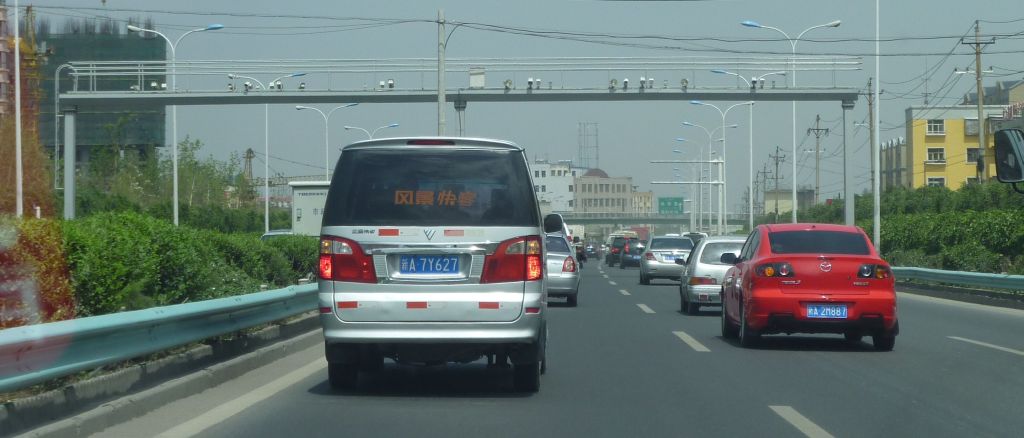
There is ample signage to the international airport, in Uyghur and in Chinese.

Here, there is the additional information that it is the international Urumqi airport, for those who really do not know where they are. Note the 55 tons weight limit for the trucks: they are sometimes much longer, wider and higher than in Europe.
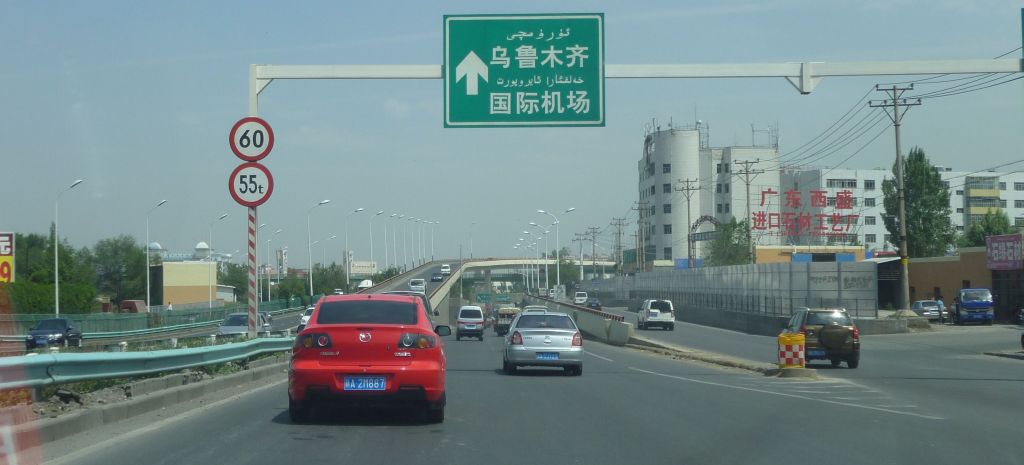
It can be useful to have some basic knowledge of Uyghur or Chinese to know that the next exit, 2.5 km away is that of the airport.

For people who cannot read, there is nevertheless a pictogram 2km from the exit

A renewed didactic effort 1km from the exit, with the pictogram and the bilingual Uyghur / Chinese full name of the airport.

At the exit, since all the drivers or their copilots are assumed to have mastered their first lesson of Uyghur or Chinese, the pictogram has disappeared.


But when it comes to choosing between Terminals 1+2 and Terminal 3, the signage becomes quadrilingual Uyghur / Chinese / English / Russian, because you will see you have better not go to the wrong terminal when you will discover the walkway in between.
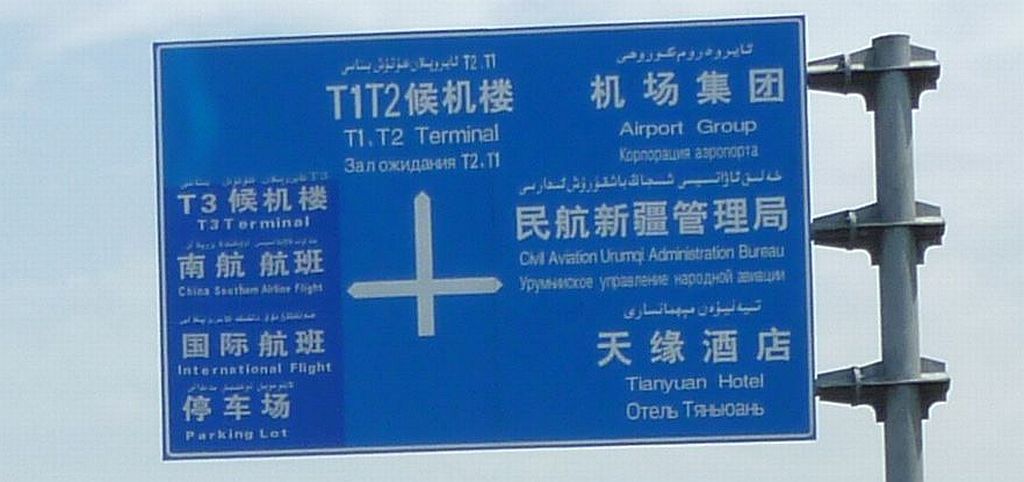
On the other hand, only initiated passengers are allowed to discover that Terminal 3 is dedicated to China Southern and the international flights of Xiamen Airlines, a subsidiary of Southern Airlines, which explains the presence of several of its aircraft there.

Quadrilingual confirmation that we are indeed in the correct direction.

… because you are going away from Terminal 2, below:

At each entrance of the terminals of URC, there is a detection of explosives with a swab of cotton which is analyzed in real time while the passengers wait in a sas. The same safety check is done at SHA (Shanghai Hongqiao), but strangely not at PVG (Shanghai Pudong).
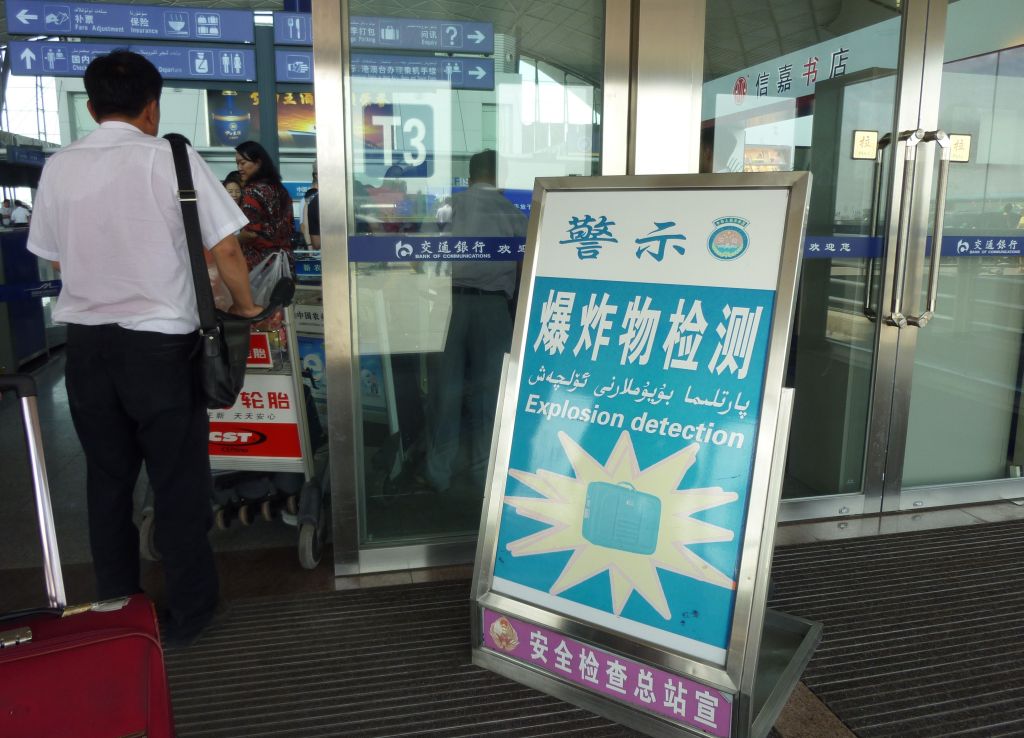
By now, since there are only CZ and MF flights at Terminal 3 and since this is the FR of an HO flight, most readers must wonder why I am going there in the first place. The reason is that this is the end of my vacation, and my wife flies back to Paris, flying CZ to PEK and onward AF to CDG. She remembers too well that checking in at URC can hit a snag that she would have a hard time handling.
Checking in my wife on that CZ flight is another case of culture shock for an Urumqi ground staff. That two foreigners arriving together with a big suitcase each could leave URC on two different flights, airlines and terminals requires a lengthy explanation, in Mandarin of course since English and Uyghur are non-starters, until she understands why I stubbornly refuse to give her my own passport.
Then, she finds no trace of the plane ticket of my wife: we must produce the printout… and discover that since she is flying economy on that domestic flight, but business on the connecting international flight, she must check in at the Elite / Business counter, at the far end of the terminal.
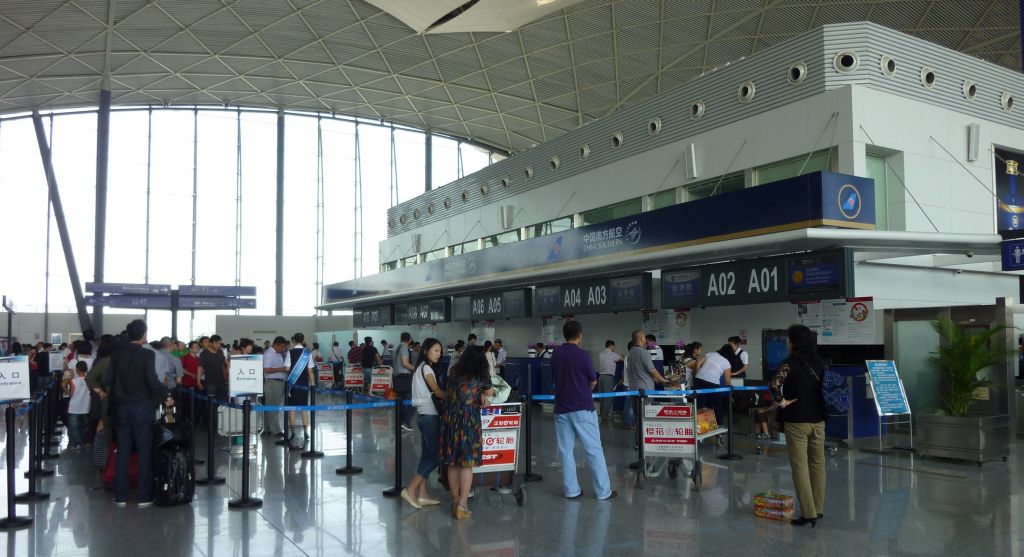
At the far end of the terminal, passengers receive red carpet treatment, and there is no waiting, but really, having to reach this dedicated counter and receive the same service was a pure nuisance.

But if there was some waiting, there are sofas in order to wait comfortably.
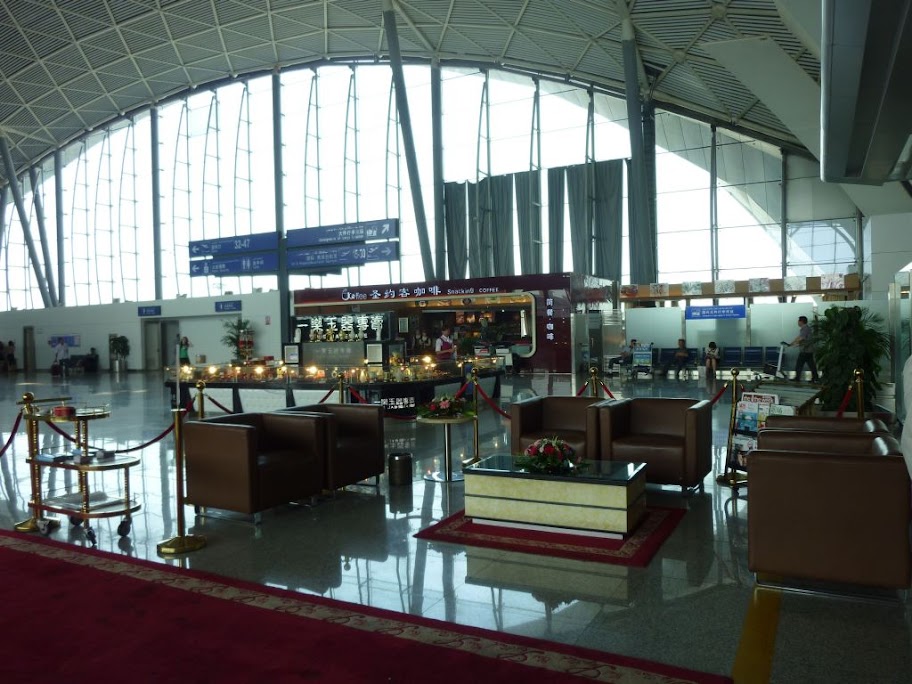
No problem this way, the boarding pass is delivered, the luggage which is a few hectograms above the 20kg economy limit is duly tagged (the Chinese are quite tolerant on the luggage weight limits)…
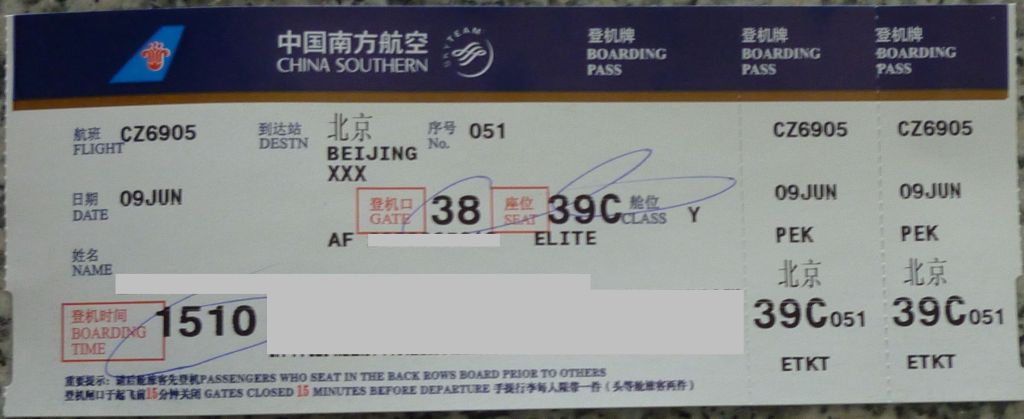
… but it is once again found oversize, and must therefore be delivered at the oversize luggage counter, like for our URC-KSG flight, but unlike our UR-DNH flight.

Is it really that oversized?

This « oversize luggage » counter is a good example of Chinese over-staffing. There are two employees at the counter processing only one passenger at a time. The latter is requested to carry himself his luggage two meters from the exit of the X-ray machine to the lift, because the third employee only opens and closes its door.
I then simply watched my wife go through the boarding pass control, and waited ten minutes to be reasonably sure that she had made it airside on her way back to PEK and CDG, before leaving the terminal.

Now, I had to return to Taipei, and stage one consisted in going to Terminal 2. This is the walkway for passengers who need to change terminals at the Departures level :

No matter if this passenger had been dropped to the wrong terminal, or had like me another legitimate reason to go to both terminals, she was doing like me : walking next to the sidewalk which was to narrow and to uneven for a standard luggage trolley.
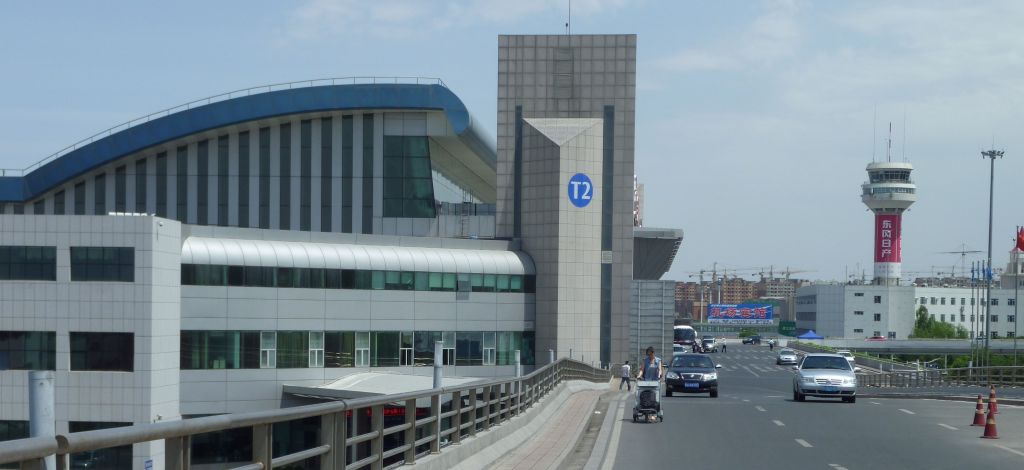
This is half of the check in counters of Terminal 2, from the upper level where the landside restaurants.

And the other half, because there is a bridge in between. The toilets at this level could be localized at a record distance from their smell.
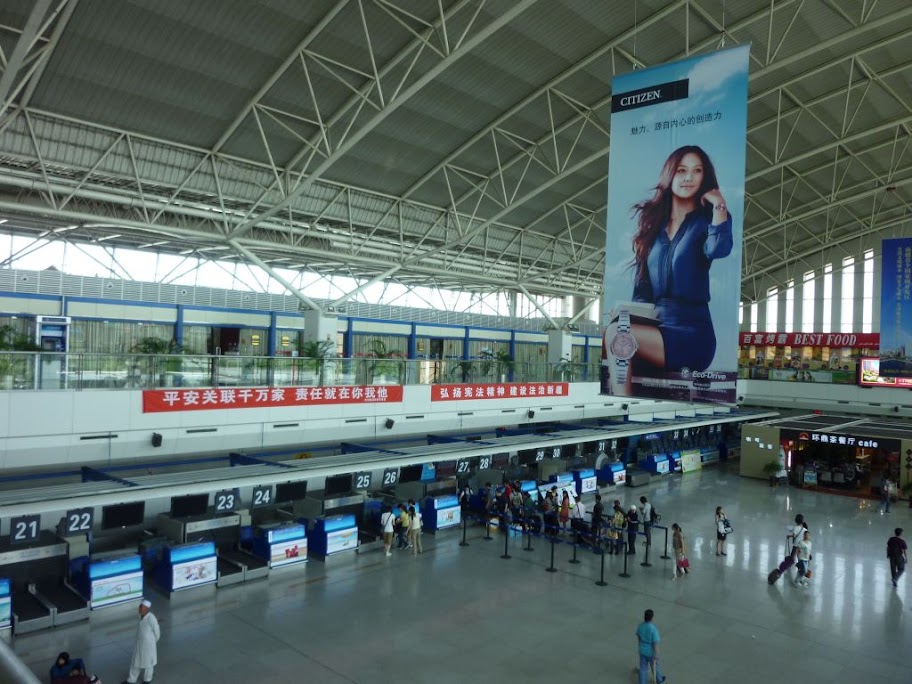
The explosive detection at one of the entrances to the terminal.

All window seats are already taken: I’ll have an aisle seat for once.

The display of the destinations from Urumqi. There is an inordinate number of flights with an intermediate stop, because Urumqi is really at the far end of China. But my flight to Shanghai is non-stop: it is actually the longest domestic flight in China (3, 277km according to gcmap.com). This is less than a coast to coast domestic flight in the USA, but nevertheless a commendable distance.
[Edit : URC-SZX is slightly longer, beating URC-SHA by 98 km. Thanks to dickyjia and gcmap.com]

Another safety check at the boarding pass control: the passengers must stand on this thing which is probably a dedicated metal detector.
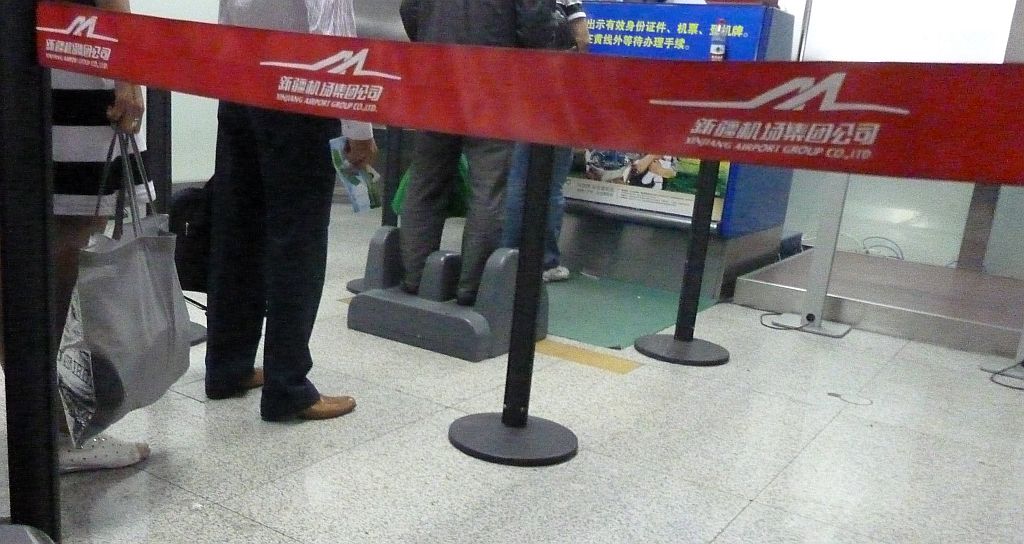
This does not prevent a systematic body check and scan with a hand held metal detector, including under the foot soles (I forgot that detail in my previous FRs). The Chinese authorities have be quite traumatized by murderous riots and attacks, and cut all internet and cell phone connections, as well as landlines out of Xinjiang for more than six months in 2010. Professionals in Urumqi were traveling fourteen hours by train each way to Dunhuang to communicate to the outside world. The official media claimed that the Uyghurs were happy that their kids were spending their time studying instead of playing games on line. Chinese civism is admirable, when described by official sources.
I arrived airside, whose windows provide both excellent lighting and an ideal view on the tarmac. The glass is not tinted, but has been covered with plastic sheets which unfortunately significantly degrade the sharpness of pictures taken with a tele-lens. My small camera is not to blame this time.
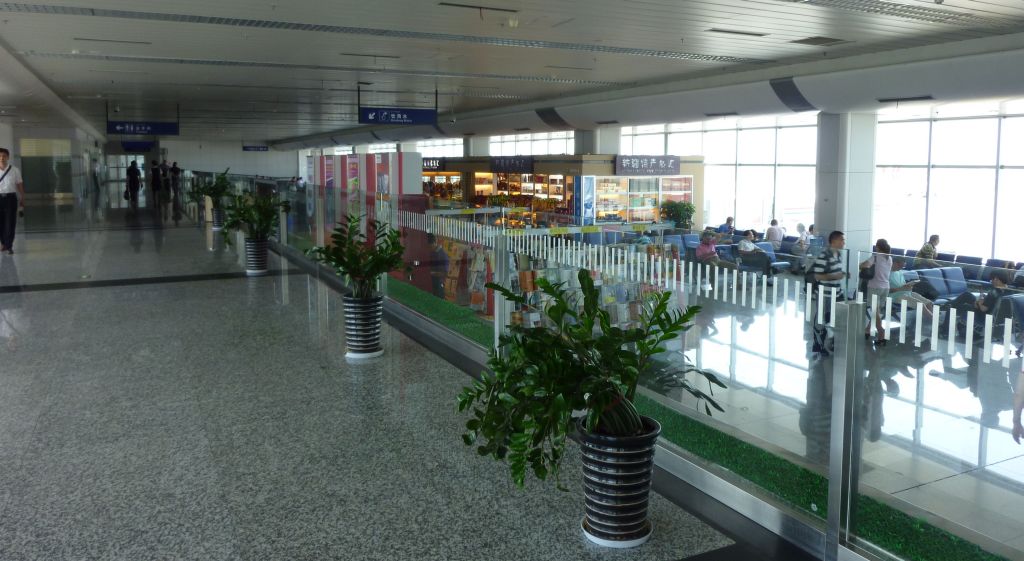

I had chosen a flight leaving one hour after that of my wife, in order to have time to handle a problem if any, and since I have both time and wide windows, I can spend the former taking pictures through the latter, especially since there is an ample supply of planes. I gathered them by airline, as I often do.
Shenzhen Airlines 738

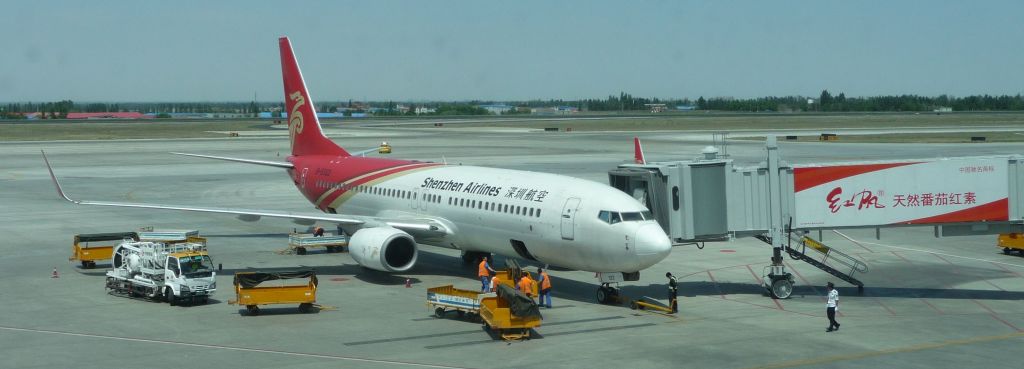
China Southern 757


China Southern 737-700
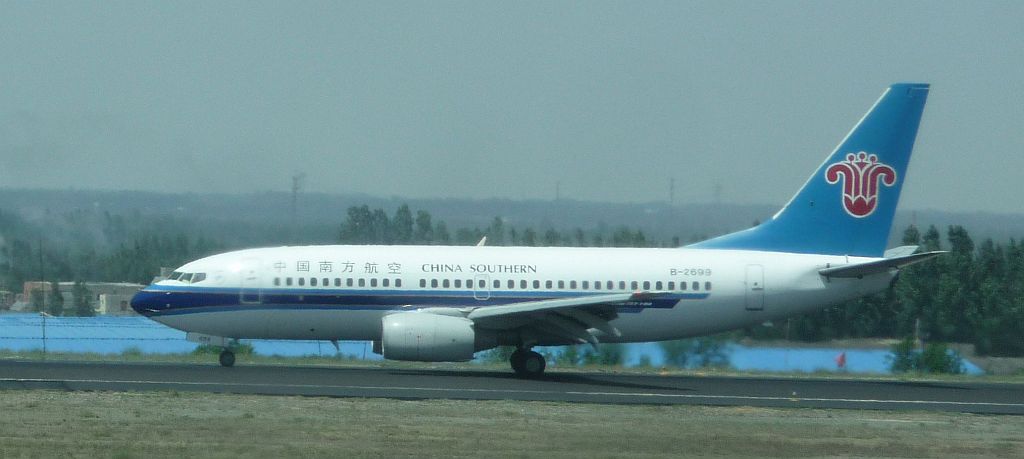
China Southern A319, far away, therefore quite blurry

China Southern A330

China Eastern A321

Tianjin Airlines E-190, numerous inURC.

(with a Sichuan Airlines A320 in the background)





Tianjin Airlines Embraer 145

Air China 738 without winglet

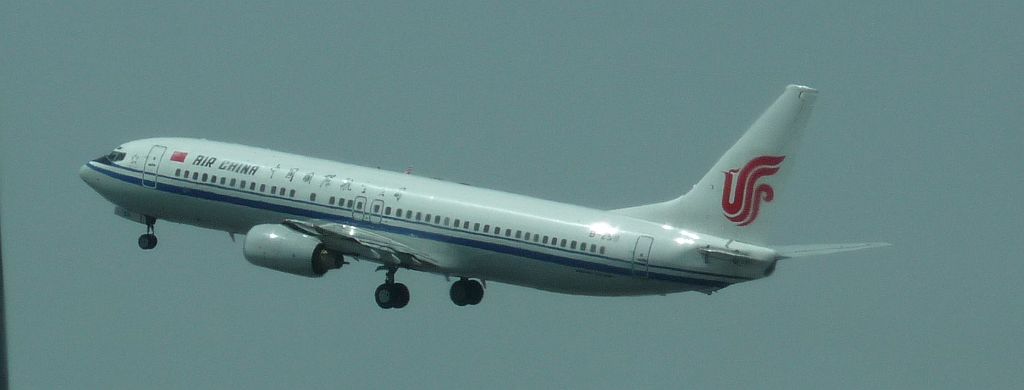
Hainan Airlines 738 with winglet
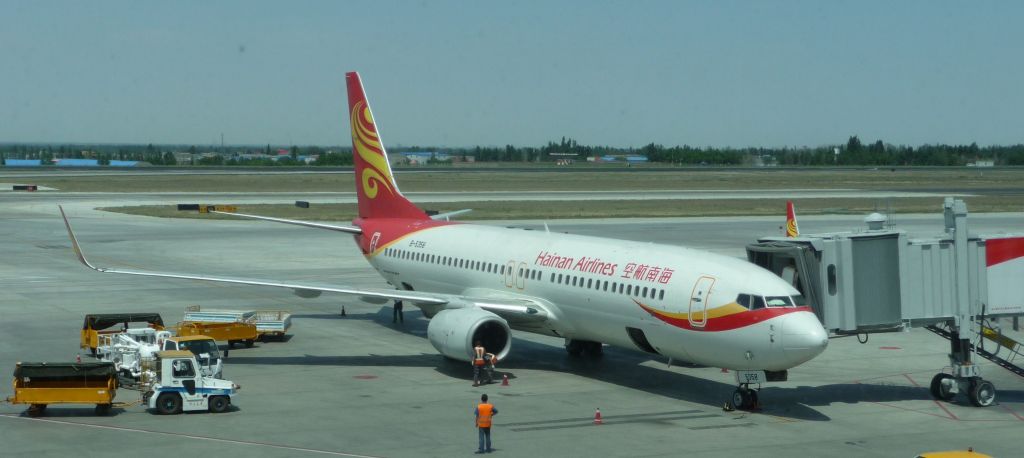
The same, with a Shenzhen Airlines in the background
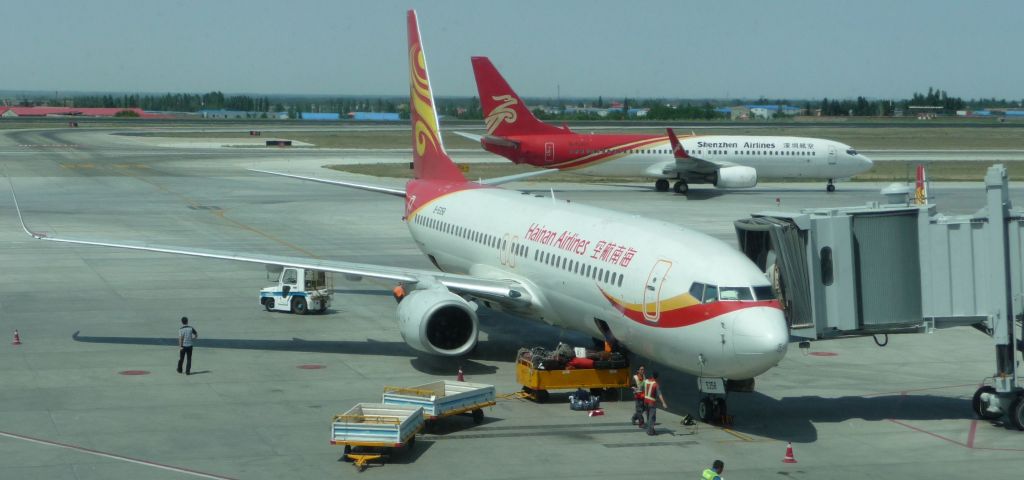
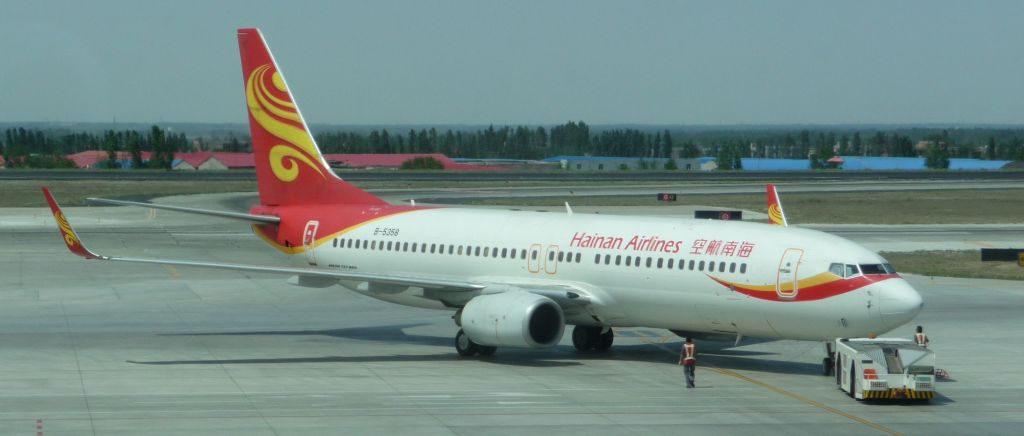
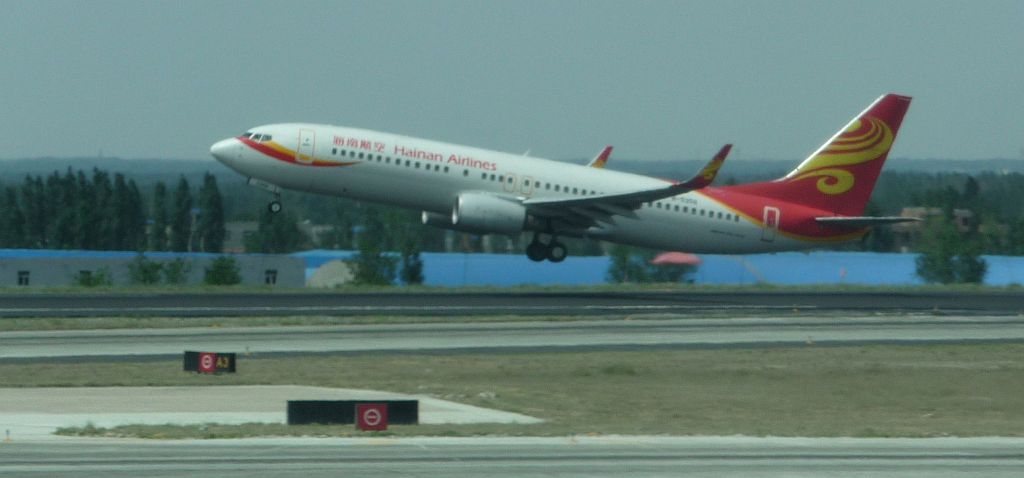
Sichuan Airlines A320
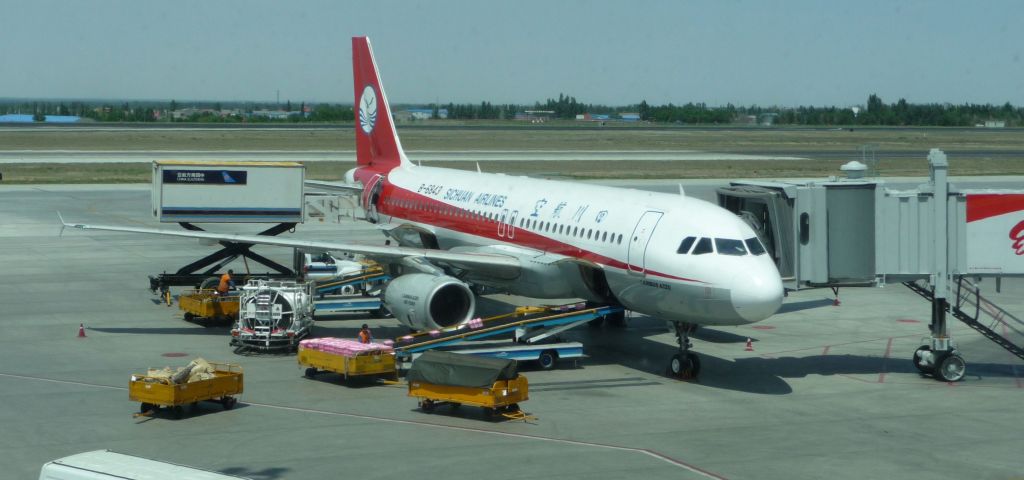
Xiamen Airlines 738

Some exotism, with a TAG Aviation CRJ-200, registered G-RADY


And an A320 ofS7 Airlines, an airlien based in Novossibirsk.
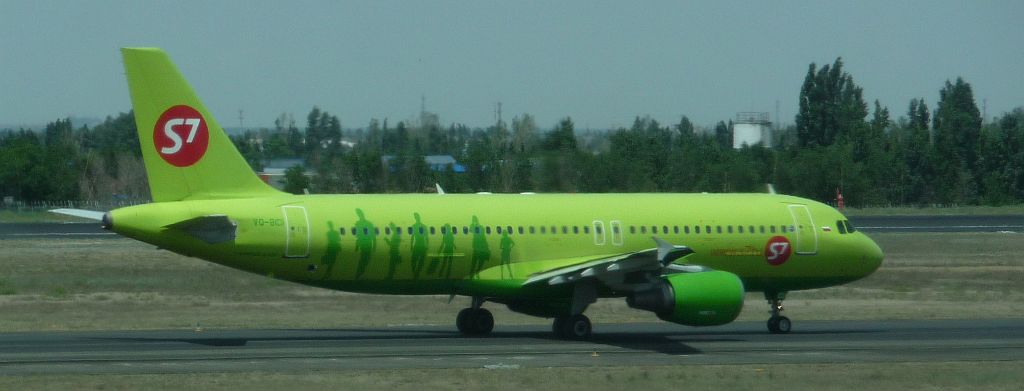
Arrival of a Tianjin Airlines E-190

… immediately handled by a Follow me car
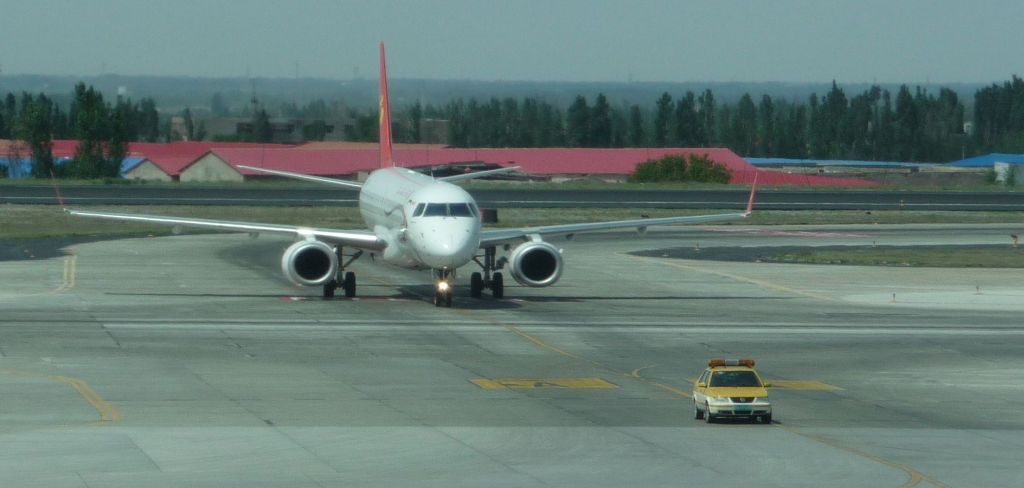
… for a rather simple way, since the pier is exactly in front of the place where the plane left the runway.
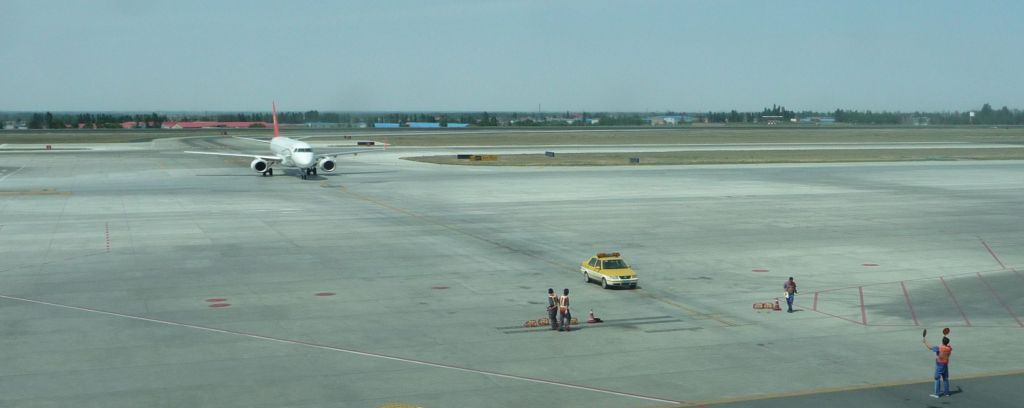

Arrival of an A320 of Sprint Airlines, a low-cost airline from Shanghai which does not have a very good reputation among my friends living there. Something like Easyjet, but not as bad as Ryanair.


The most interesting arrival is that of that Juneyao Airlines 320: Flight HO1215 is on time, and I can reasonably hop that my flight HO1216 will be on time too.

It is guided too by a “Follow me” car.


… and reaches gate 12 just left of my plane spotting location.
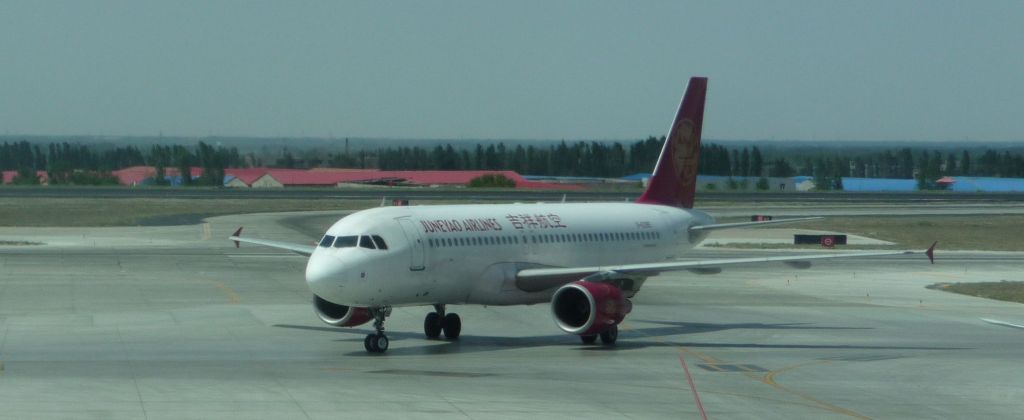

By the time I moved to take a picture of the right side, there was already quite a lot of people and equipment milling around. There it is with a Sichuan Airlines A320 in the background. Note that Juneyao's Chinese name (吉祥航空) is written from left to right on both sides of the plane. This is unusual : the Chinese usually write from front to rear on planes and land vehicles. Check where 航空 (Airline) appears on the other aircraft spotted that day : Shenzhen Airlines is the only to write the airline's name this way.

The Sichuan Airlines A320 taxies to the runway

A close up of the same plane

I am not the only plane spotter here

On the other hand, the ambient noise does not stop a devout passenger from praying.

Or that other passenger from sleeping, after having removed his shoes.

Child care is still a female task in URC.
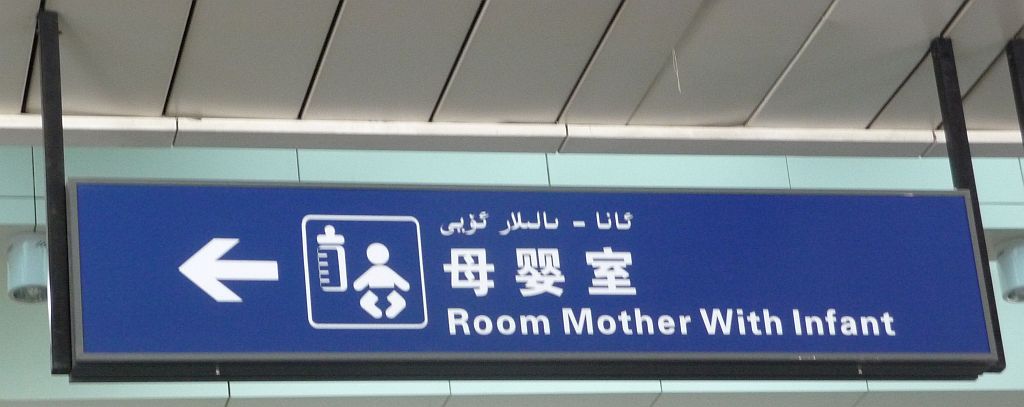
Boarding time is approaching for me…

… and my indiscreet telelens tells me that the plane is nearly full with 136 passengers on board. There has been six more at the last minute, because the total had reached the full 146 passenger capacity when I boarded.


We are boarding on time

The seat pitch is not generous (remember I am not a tall person).
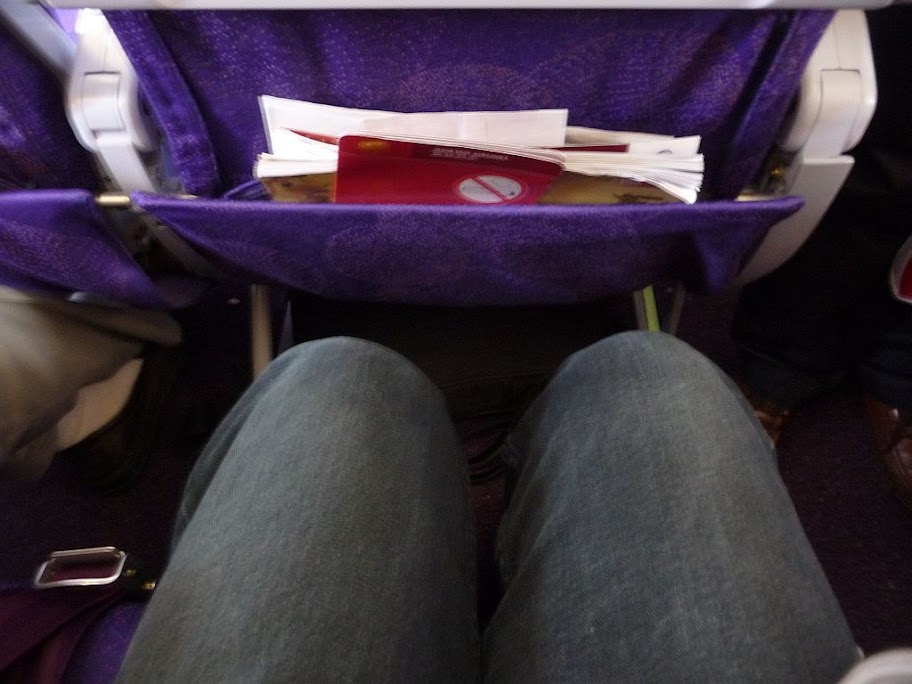
The passenger at seat 13A is going to record the entire take off, and then take numerous pictures during the climb. Once the censorship issues are solved, Flight Report will have a promising market in China.

But aviation geeks are courteous people, and she let me take some pictures at arm’s reach, and also took several pictures for me with me own camera. Presumably because I do not have an Asian type, she started in Uyghur (most Uyghurs would easily pass as Europeans), before shifting to Mandarin Chinese.
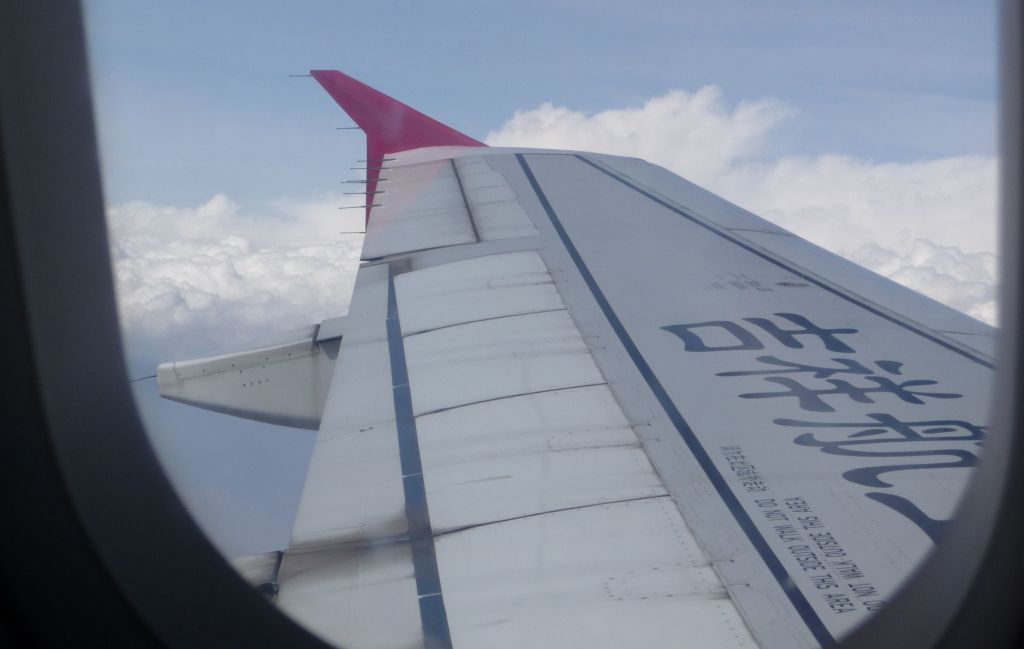



Since I have an aisle seat this time, I can take this opportunity to move around, but there is not much to see in an A320.


The toilets could not be more ordinary

The safety card of CZ planes based in the URC hub are trilingual Uyghur – Chinese – English, but this one of HO (based in Shanghai, SHA+PVG) is only bilingual Chinese + English.

Distribution of the meal

That is when I discover that my table is not clean at all. One demerit in comfort.

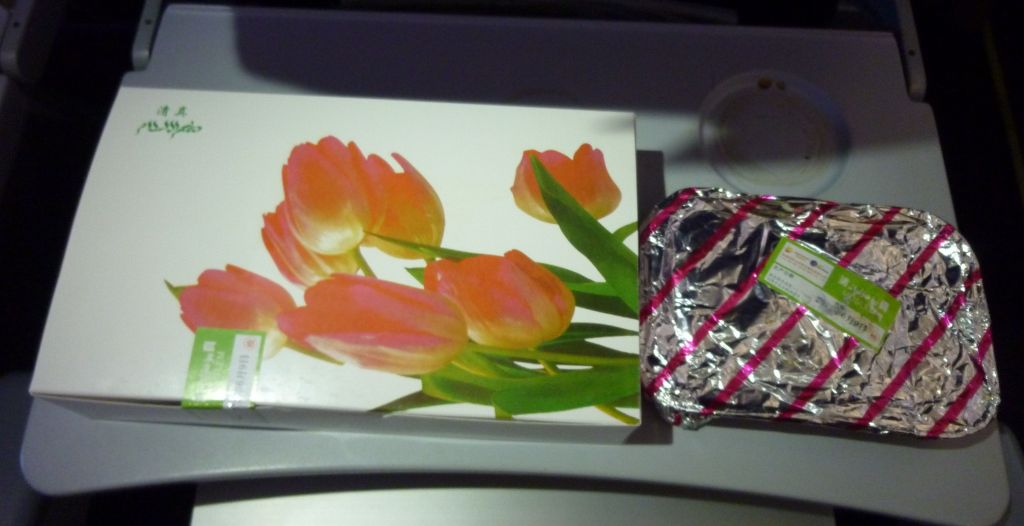
The meal is guaranteed to be fully halal


The pack in the center contains vegetables marinated with Sichuan red peppers. Those who only know Chinese dishes from their pale copies served in “Chinese” restaurants in France (often held by Vietnamese or Cambodians second generation refugees) do not know that the vast majority of meals served in China are very spicy. Sichuan is famous all over China for its fiery red peppers. If you are unsure about your body’s resilience to the culinary dynamite in a 3-pepper rated Sichuan staple, do not try it !

As soon as it has hot peppers, it is tasty!
Site work in Sichuan gave me adequate training, and I would have found the chicken dish somewhat bland without them.
I do not know how to say “winglet” in Uyghur (or in Mandarin, for that matter), so I used the fact that my neighbor went to the toilets to take this picture.


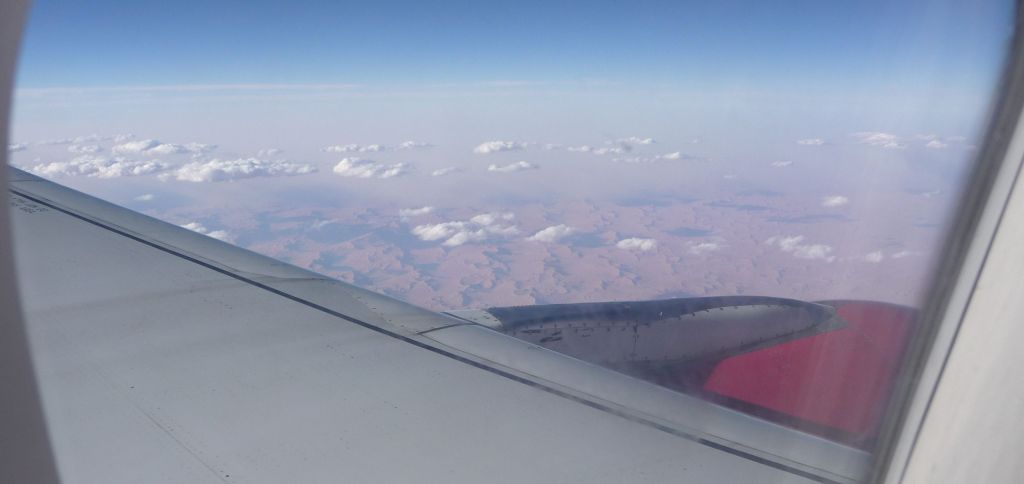

A flight attendant distributes travelers’ satisfaction surveys here and there. I do not know if the seats had been predetermined, but I wish I had had a chance to provide my opinion.
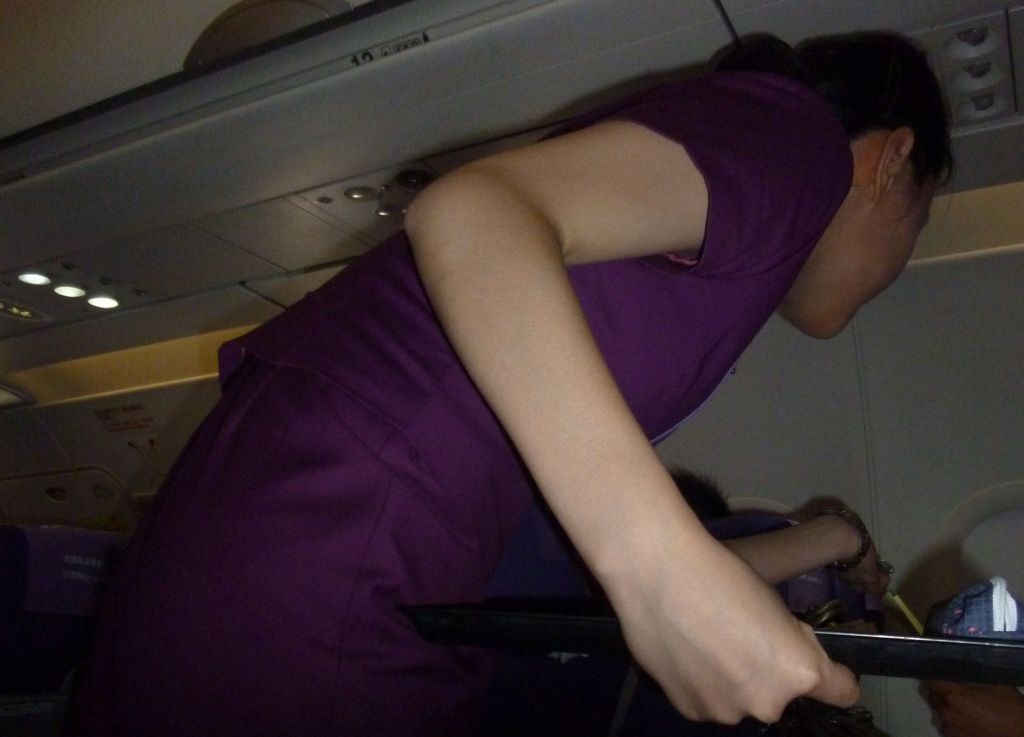
Flying due east accelerates the sunset: this flight goes through two geographic time zones, even though all China is on Beijing time.
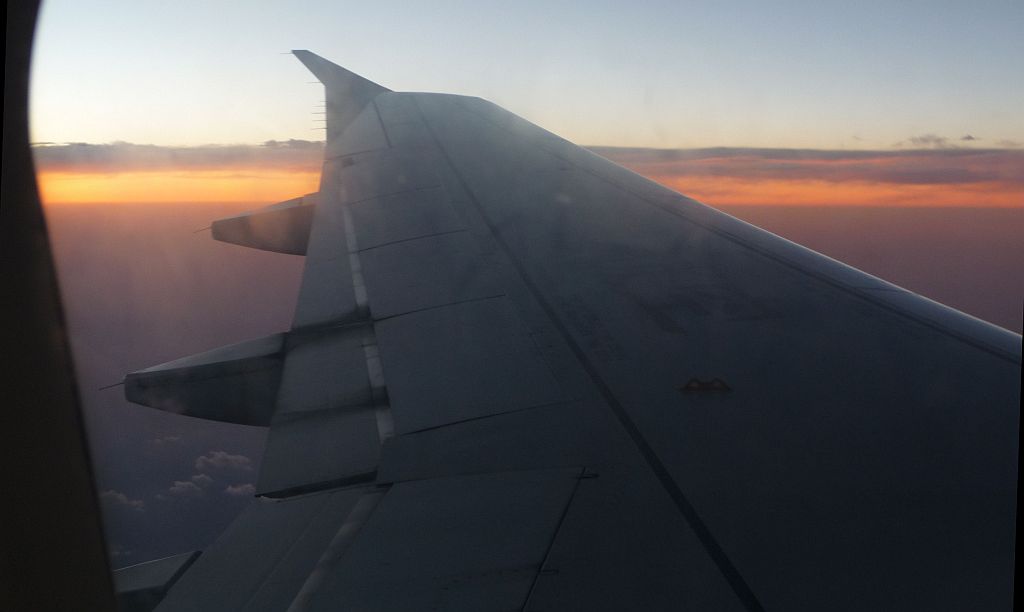
Later, distribution of small bottles of water.

We are still a long way from Shanghai, and it is a good time to address the comfort of this flight. Quite frankly, it is under-average, not to say downright poor. Not only is the seat pitch insufficient, even for me, but the only passenger who decided to lower his seat in my seating area had to be the one in front of me, further reducing space for my laptop on which I was starting typing a flight report. There were also quite noisy groups of passengers.
The behavior of passengers is only bad luck. But that was not all. When I boarded the plane, there was a too loud music in the PA. I enjoy listening to music, but I hate being forced to hear music. Especially when it is playing in a very short loop. An even more so when it is playing in a very short loop for 4h20’ in a row, plus boarding time, plus disembarkation time. It was exhausting. HO’s comfort rating took a beating because of that.
During the descent, we had a bilingual promotional presentation of Shanghai, on its records and professional and tourist attractions, during five minutes in each language. I do not quite understand the purpose of this strange concept: passengers who know why there are going to Shanghai are unlikely to learn much. The last time I had something similar was early in the morning on a night Harbin-Beijing night train.
Anyway, we landed on time. This is the separation between passengers with/without checked in luggage.
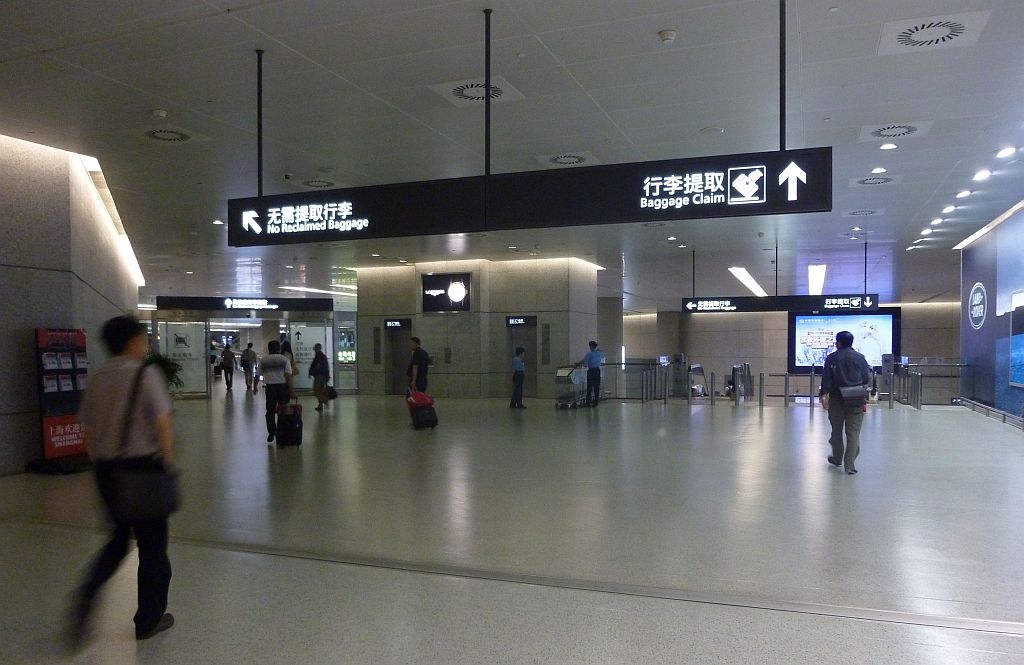
The former take this lit bridge on the left, while the latter go down one level to the luggage delivery area.
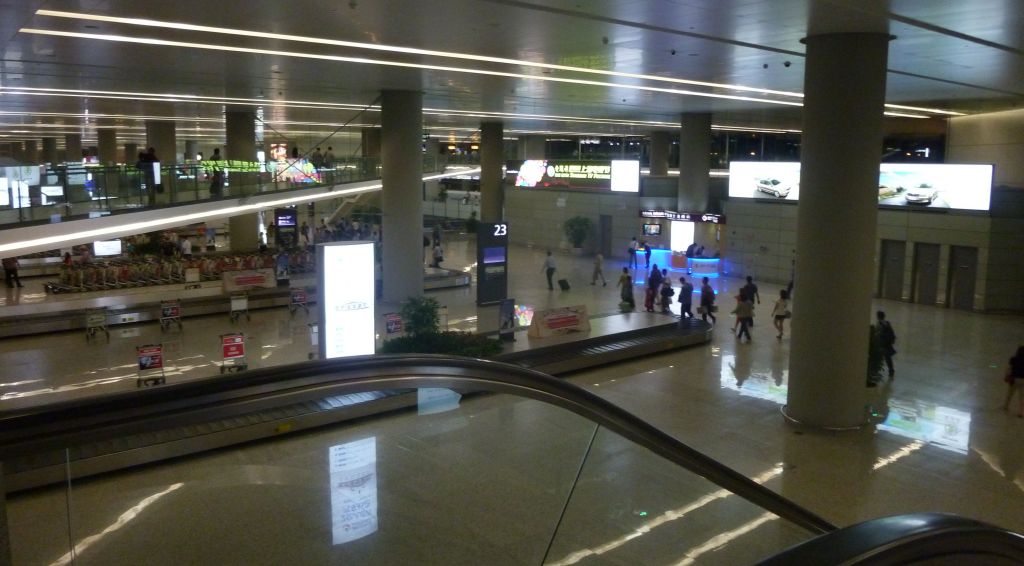
This is the list of the flights at that time. Out of twelve airports (Taiyuan appears twice), there are only three where I never set foot.
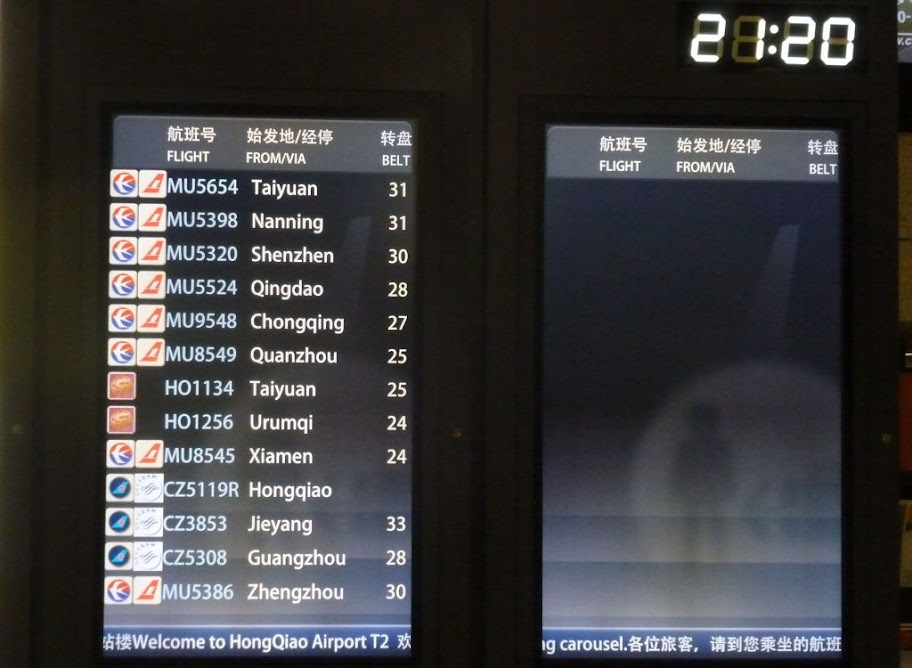
(Flight CZ5119 should be SHA-PEK. I do not understand why it is listed here, this may be a bug).
I only need to recover my luggage, quite quickly, and reach the taxi stand where there is zero waiting this time, ignoring the proposals of the inevitable illegal taxi driver hoping to get the jackpot with a foreigner unware of the actual local fares.



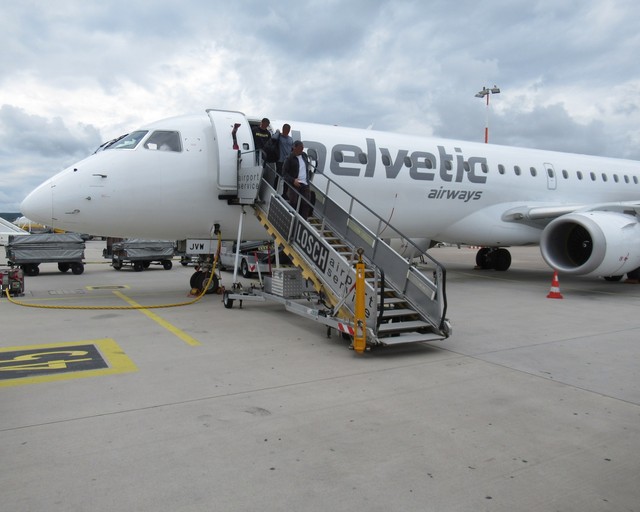

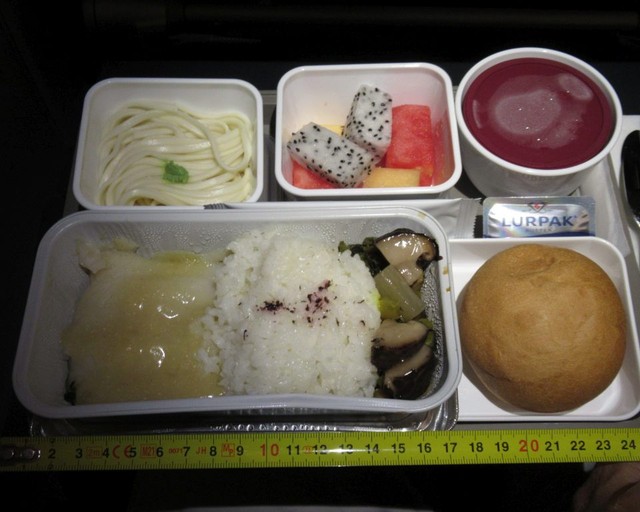

Thank you for this wonderful Flight Report. Junyao is a rarity in China. It's good to see a Junyao report, though there is a small mistake. The longest domestic air route within China should be Urumqi-Shenzhen, slightly longer than Urumqi-Shanghai.:p
Thank you for your comment and information. I added the correction, with due reference to the source.
I also translated my report on my LCX-SHA flight with Juneyao, arguably one of my most memorable domestic Chinese flights.
I look forward reading a FR ex-CAN from you !